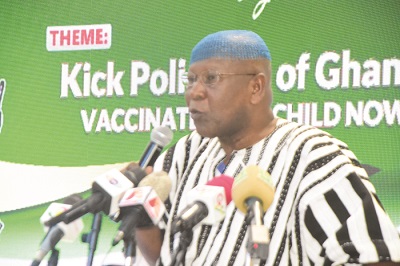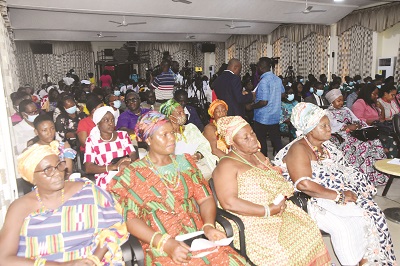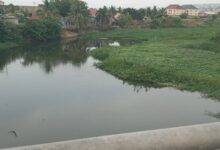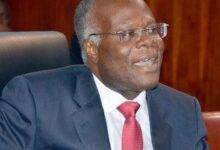
Ghana is on high alert for poliomyelitis (polio) following the confirmation of paralysis in two infants and others detected in the country.
Health authorities say the Circulating Vaccine Derived Polio Virus type 2 (cVDPV2) have been detected in areas in the Northern, Savannah, Ashanti, Bono East and Greater Accra regions.
It is to break transmission of the virus and build population immunity while preventing future polio outbreaks in the country that the Ghana Health Service (GHS) has launched the nationwide polio immunisation campaign; beginning September 1 to September 4, 2022 and from October 6 to 9, 2022.
The exercise would administer two rounds of the novel oral poliovirus type 2 (nOPV2)vaccine to all children under five years, nationwide.
Speaking at the launch, Head of the Expanded Programme on Immunisation (EPI) at the GHS, Dr Kwame Amponsah-Achiano, said about 6.3 million children are targeted under the exercise “whether the child has ever received the vaccine or not.”
“This time, we are using the nOPV2 which is the first of its kind in the country and the more the doses, the better the protection, so, it is for all children under five; immunised or non-immunised.”
According to the Head of EPI, polio was the leading cause of paralysis among children which was why the vaccines were important and effective to protect them against the virus.
He cautioned that all children under 15 years experiencing sudden paralysis should be presented to the nearest health centres that could be an indication of polio.
“Paralysis in children under 15 years could be polio and as part of response measures to eradicate the virus, surveillance is key so if such a case is reported, we can conduct further investigations to confirm polio or otherwise, to make sure we capture everybody.”
Dr Amponsah-Achiano said in addition to static sites including health facilities where vaccines would be administered, vaccinators would conduct house-to-house vaccinations, camp outs, mobile and outreach strategies to reach eligible children.
The Deputy Minister of Health, Alhaji Mahama Seini, said Ghana was prone to high level of polio transmission in view of outbreaks in neighbouring countries and beyond adding that; “a polio case anywhere is a threat everywhere especially to children.”
For his part, the Deputy Director-General (DDG) of the GHS, Dr Anthony AdofoOfosu, said the cVDPV2 is as dangerous as the wild polio virus and in extreme cases, could cause death among children.
“Every child in Ghana counts. Polio is not a treatable disease, yet it is completely preventable. Vaccination against polio provides the most effective form of prevention and just like the eradication of smallpox, polio eradication is possible through our collective efforts as government, partners, leaders, communities and as parents or caregivers,” he said.
The DDG said efforts must be intensified to “keep our environment clean and also maintain good personal hygiene.”
Polio, or poliomyelitis, is a disabling and life-threatening disease caused by the poliovirus and spreads from person to person through faecal routes and may multiply in the intestines from where it subsequently invades the nervous system causing paralysis most often in the limbs.
Some symptoms of polio are fever, fatigue, headache, vomiting, neck stiffness and pains in the limbs. Treatment is mainly supportive and can be prevented through vaccination, improved sanitation and personal hygiene.
BY ABIGAIL ANNOH







